Top 10 Popular Vegetables in China
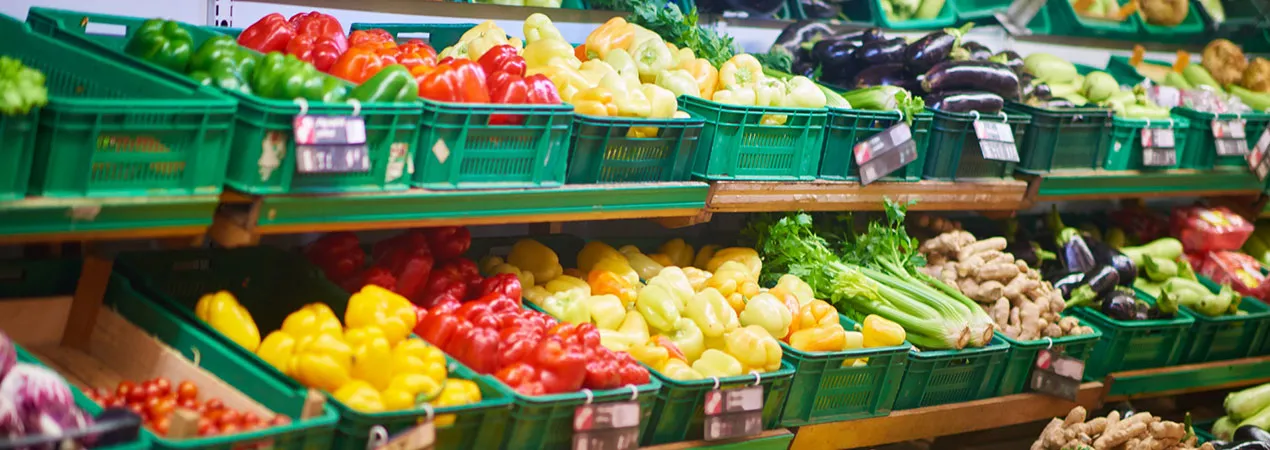
The traditional Chinese diet consists mainly of vegetables, with meat and fish served in smaller portions. The Chinese treat vegetables as a dish rather than an accompaniment to meat or fish, as in the West. In some Chinese dishes, where there are meat and vegetables, they allow the vegetables to be the star of the dish.
Today, some popular Chinese leafy vegetables can be found in your supermarkets, such as the ‘bok choy’ or ‘choy sum’. If you have visited a Chinese market in your hometown, or familiar with Chinese cuisine, you may see that many Chinese vegetables come in a variety of intriguing shapes, sizes, and textures, for example, a bumpy cucumber-like melon to a green-colored bean that can be a foot long.
This article is going to take you on a hearty journey to introduce you to China’s top 10 vegetables. Some of these vegetables were introduced to China during imperial expansion and trade. You can get a taste of how these vegetables, like the simple humble ‘potato’ to the ‘winter-melon’ are turned into appealing and heart-warming dishes for you to try when you visit.
1. Potato 土豆 (tǔ dòu )
There are several names for potato in Chinese, the most commonly known is 土豆 (tǔ dòu) translated as ‘earth beans’, 洋芋 (yang yù) ’foreign taro’, and 马铃薯 (mǎ ling shǔ ) ‘horse-bell-tuber’ was introduced to China in the 16th century. However, it was not until the 18th century that it was on the dining table for all. Today, China is the biggest potato producer which accounts for more than 20 percent of both the global potato-growing area and the world potato harvest. You may be surprised to know that potatoes are often served as a dish, such as in stir-fries, not as a main staple in China. It is also used to make potato starch noodles, giving a smooth chewier texture than regular wheat noodles.
Popular dishes:
Di San Xian (地三鮮 dì sān xiān) or Three Elements from the Earth: a stir-fried dish made with strips of potatoes, eggplants. and bell peppers.
Sichuan Stir-Fried Potatoes: a popular home-style dish you can find in many restaurants in China.
Braised beef with potatoes: another popular home-style dish especially in winter for its nutritional benefits.
2. Chinese Radish 萝卜(luó bo)
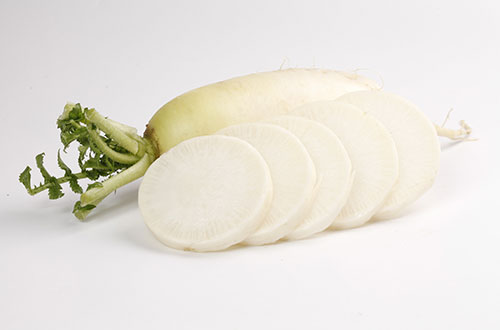
The Chinese radish is also known as luo bak in Cantonese, the Japanese radish, or daikon. Its appearance resembles an oversized white carrot or parsnip, with a tapering root and a spray of large green leaves. It has a tender, crunchy texture with a delicate flavor. It is rich in vitamin C and calcium.
There is a saying that goes” Eat radish in winter and ginger in summer, keeps the doctor away (冬吃萝卜夏吃姜,不用医生开药方 dōng chī luó bo xià chī jiāng, bú yòng yī shēng kāi yào fāng) .” The Chinese people believe radish is a very effective digestive aid and is very good to have during winter. Due to its texture and delicate flavor, it can be ideal for salads, stir-fries, stews, soups, and making it into a pickle. Pickled radish is a very popular dish in many parts of China. It can be eaten as an appetizer or as an accompaniment for the River Snail Rice Noodles.
Popular dishes:
Spicy White Radish Salad: shredded radish with sesame oil, black vinegar, and dried chili powder.
Braised mutton with radish: is a popular dish in winter in China. Mutton has always been regarded as one of the important foods for winter supplements. In the cold winters, eating mutton can supplement qi and nourish qi, promote blood circulation, and enhance the ability to keep out the cold.
3. Chinese Cabbage/Napa Cabbage 大白菜 (dà bái cài)
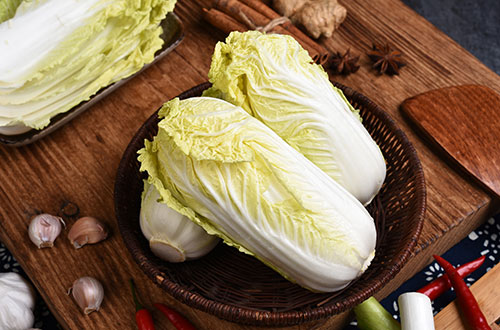
Chinese cabbage is indigenous to China. The earliest Chinese cabbage seeds were found in a clay pot in Xi’an Banposite which dates back to 6000-7000 years. It is oblong, the leaves are light green with a yellow tint and are wrinkled. It has a sweeter flavor than its round cousin. Due to the vegetable's resistance to cold, the cabbage is popular throughout China, especially in the northern regions of the country. It is nutritious, inexpensive when compared to a lot of other vegetables. In the past, people from the north-eastern part of China stocked their cellars with this cabbage for winter, which is the only vegetable they have during the season.
Popular dishes:
Dongbei-style pickled cabbage (东北酸菜 dōng běi suān cài): it is similar to the Korean kimchi. In north-eastern China, this pickled cabbage is used in pork dumplings, stews, and stir-fried with vermicelli noodles with some meat.
Stir-fried Chinese cabbage: a home-style dish that is very easy and quick to prepare.
4. Tomatoes 番茄 (fān qié)
Known in Chinese as 西红柿 (xī hóng shì) the ”western red persimmon”, or 番茄(fān qié) the ”foreign eggplant”. Tomatoes were introduced to China sometime in the late 16th or early 17th centuries and had a mixed reaction. It was initially grown as an ornamental plant and listed in The Register of Flowers (群芳谱 qún fang pǔ) which was written in 1621. At the beginning of the People’s Republic of China, western restaurants were emerging in the country. Tomatoes were widely used as an ingredient in western food; farmers around the city where the western restaurant was located, grew tomatoes to sell to the western restaurants. Over time, tomatoes became acceptable in Chinese cuisine creating home-style dishes such as scrambled eggs with tomatoes, stir-fried beef with tomatoes, and used in soups. Today, China is the world’s largest tomato grower – a title it has held since 1995.
Popular dishes:
Stir-fried beef with tomato: thinly sliced beef stir-fried with wedges of tomato in an oyster-flavored sauce.
Scrambled eggs with tomatoes: a very popular and simple home-style dish. It is the first dish most Chinese people learn to cook!
Tomato egg-drop soup: a Chinese favorite with a delicate flavor to enjoy before dinner.
5. Chinese Long Beans 豆角 (dòu jiǎo)
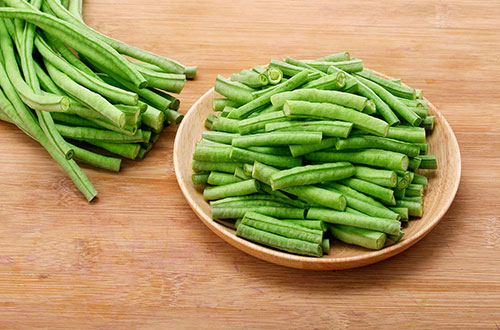
Chinese long beans are a very popular and common summer vegetable in China. Compared with the string green beans, it is thinner and usually grows to around 40-50cm. The color of the Chinese long bean varies somewhat, from a pale green to a very deep almost forest green. As far as the taste, most types have a very similar flavor to the western green beans, but a crunchier texture, and cooked in many of the same ways. The Chinese long bean can also be pickled with the Sichuan peppercorns, garlic, ginger, and star anise. The pickled beans can be eaten as a condiment for rice noodles or it can be as a cooking ingredient.
Popular dishes:
Stir-fried Chinese long beans with garlic: is a popular Chinese restaurant dish that comes from the Sichuan region in western China.
Pickled Chinese long beans with ground pork: called 下饭菜 (xià fàn cài) in Chinese, is a great accompaniment with rice.
6. Cucumber 黄瓜 (huáng guā)
The cucumber is native to India, where it’s been grown for more than 3,000 years. It was introduced to China by Zhang Qian in the 2nd Century BCE, who was a Chinese explorer that gave an account of the lands of Central Asia to the Courts of China. Like other vegetables which were introduced from other countries, the cucumber was initially called 胡瓜 (hú guā) or “foreign melon“ and during the 4th Century, Shi Le, the emperor during the late Zhao Dynasty (319-350 CE), changed the name to 黄瓜 (huáng guā) or “yellow gourd”. There are a variety of cucumbers found in China, that come in many sizes and textures, some with smooth skins or bumpy skins, like the bitter gourd. One particular that when ripens turn yellow. The most common cucumbers found in supermarkets are green, hence we call it 青瓜 (qīng guā)” green gourd”. As cucumbers are 96% water they help you stay hydrated, and this makes it a popular snack and used in salads during the summer months.
Popular dishes :
Smashed cucumber salad with garlic: a light and refreshing appetizer made with cucumbers which are lightly smashed then tossed with vinegar, sesame oil, salt, and a pinch of sugar.
7. White Gourd/Winter Gourd 冬瓜 (dōng guā)
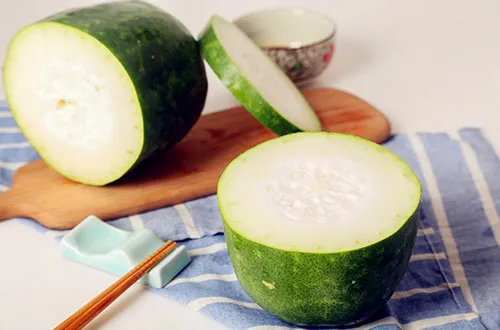
In Chinese, 冬瓜 (Dōng guā) means “winter melon. Its name likely comes from the fact that, while grown during summer and autumn, it can be stored for up to three to four months and eaten during the winter. It is indigenous to China. It is also known as ‘white gourd’ or ‘ash gourd’. Its shape is oblong, can grow to more than a foot long, and weighing more than 40 pounds. It is dark green, with a waxy skin, white flesh, flat white seeds on the inside, and grown on a vine. It has a mild-taste, that’s often used in soups, made into sweets, and beverages. It is also used in Chinese medicine as a herbal treatment for mild urinary tract problems. The Chinese believe that winter melon helps reduce heat, and is good to be consumed in hot summer weather and/or after eating too many fried foods.
Popular dishes:
Winter melon soup: slices of the melon are simmered in a broth with Chinese dried mushrooms, shrimp, pork, and seasonings. It is a popular dish that is often served in a Chinese banquet.
Braised pork ribs with winter melon: a favorite dish in summer and easy to prepare.
8. Onion 洋葱 (yáng cōng)
In Chinese,the onion is called 洋葱 ( yáng cōng), which means western onion. It was introduced into China during the 1st or 2nd Century BCE. It is particularly high in vitamin C, regulating the immune system, collagen production, tissue repair, and iron absorption. Eating onions may help control blood sugar, which is significant for people with diabetes or pre-diabetes. Popular in China and again, the leading producer in the world.
Popular dishes :
Onion salad also called Xinjiang tiger salad (新疆老虎菜): a bright, crunchy salad that originates from north-west China. It is often served as a side dish to accompany meat skewers. The main four ingredients are tomatoes, red onions, green chilies, and coriander. It’s believed that the name “tiger” comes from the fact that the pungent flavor from the onions and chilies stimulates your palate at first taste, just like the shock you would get when encountering a tiger!
Stir-fried beef with onions: with its distinctive flavor from two types of onions – yellow and green onions is a simple and satisfying dish enjoyed by many.
9. Large Green Onion 大葱 (dà cōng)
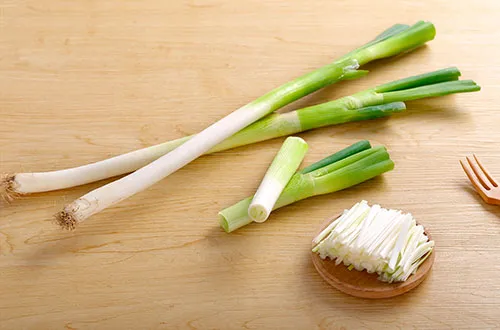
They look like oversized scallions that are normally 50 to 60 cm long, some can grow as long as 80cm. The best large green onions grow in Zhang Qiu County in Shandong Province. They are very popular in northern China, where they can be eaten either raw or cooked. The white part of the onion can be used to treat colds and other illnesses. They also contain a high level of Vitamin K which is known to decrease the effects of alzheimer.
Popular dishes:
Stir-fried large green onions with beef/mutton: a popular dish that can be found in many restaurants in China.
10. Cauliflower 花椰菜 (huā yē cài)
Also called 菜花 (cài huā) which is a direct translation that means ”flower of vegetable”. The cauliflower is believed to come from Asia Minor, and was introduced to southern China during the mid-19th Century. Currently, China is one of the countries that cultivates and consumes the most cauliflower.
Popular dishes:
Stir-fried cauliflower with pork belly: another popular dish frequently ordered at restaurants in China.
Chinese people consume a variety of other vegetables. Every season, they have their favorites from bamboo shoots in spring, bitter gourd in summer, lotus roots in autumn, and spinach in winter. As vegetables are an important part to maintain a healthy diet, we hope this article will inspire you to try these nutritious dishes during your stay in China.

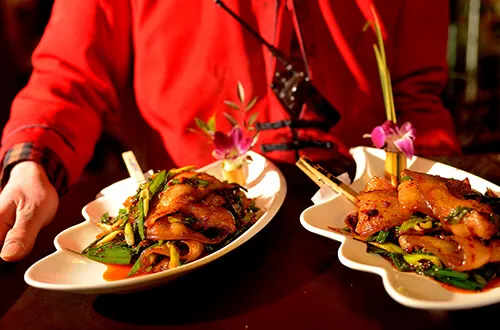 Top 10 Most Popular Dishes in China
Top 10 Most Popular Dishes in China 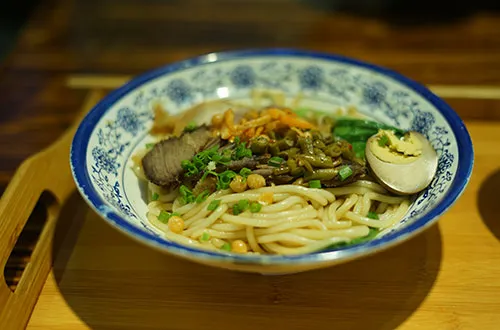 Top 10 Rice Noodles in China
Top 10 Rice Noodles in China 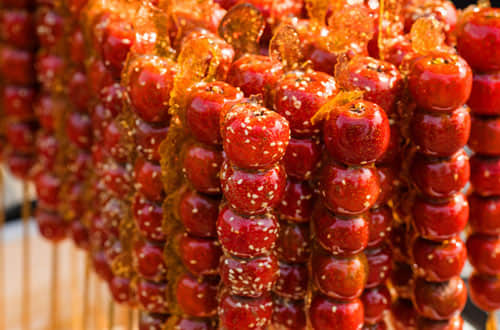 Top 10 Most Popular Desserts in China
Top 10 Most Popular Desserts in China  Eating & Drinking Food Cost
Eating & Drinking Food Cost